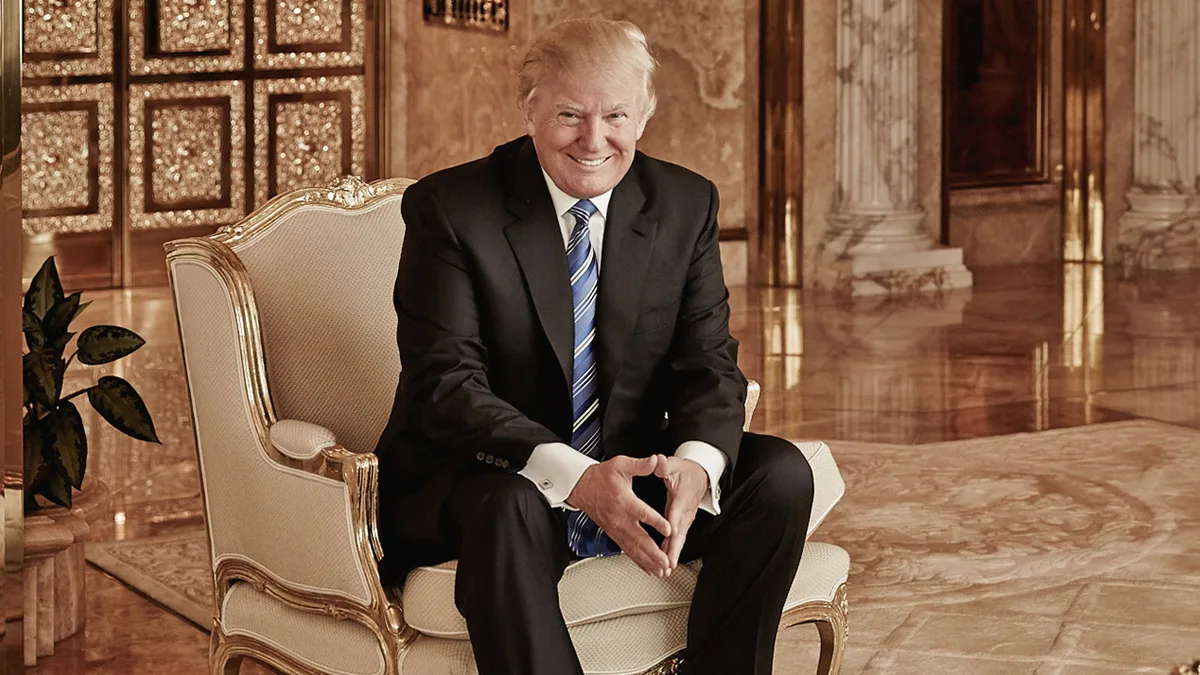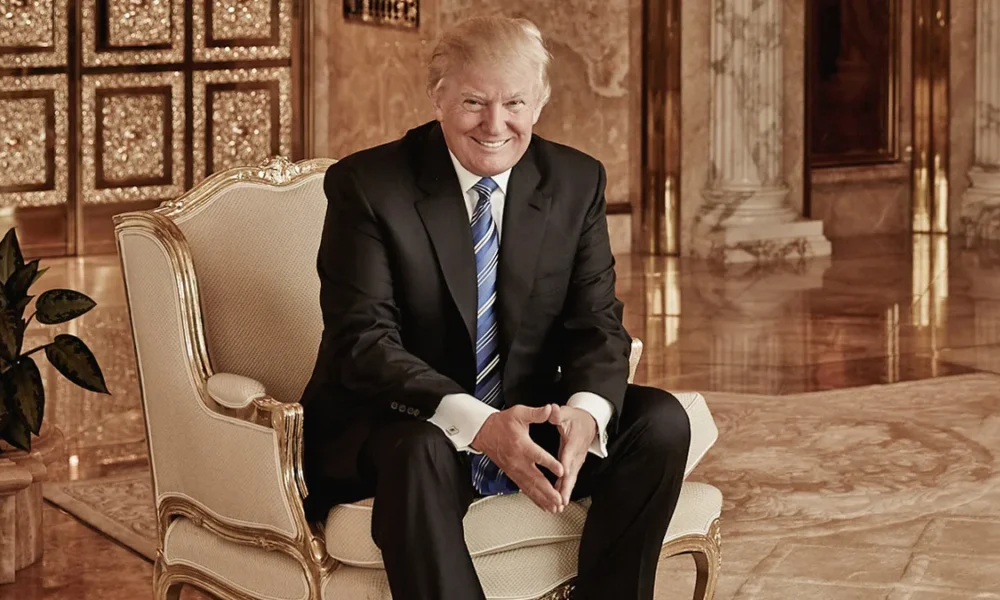Business
Donald Trump Announces Fresh Tariffs – Which Countries Will Suffer Most?

President Donald Trump Announces Fresh Tariffs
In a move that has sent ripples through global markets, President Donald Trump has announced a new wave of tariffs set to take effect on August 1, 2025. The most severely impacted nations face steep rates of up to 40%, with Myanmar and Laos bearing the brunt of these economic measures. This escalation marks a significant turning point in America’s trade policy, as the administration adopts an increasingly aggressive stance toward what it perceives as unfair trading practices.
While the deadline looms large on the economic horizon, Trump has indicated it’s “not 100 percent firm,” suggesting room for diplomatic maneuvering. So far, only the United Kingdom and Vietnam have successfully negotiated trade agreements with the U.S., leaving 12 other trading partners scrambling to secure deals before the tariffs kick in. The President has also issued a stark warning: any retaliatory measures from affected nations will trigger equivalent responses from the United States, potentially spiraling into an even more intense trade conflict. As global markets brace for impact, let’s examine which countries stand to lose the most, how these tariffs will be structured, and what economic implications we can expect in the coming months.

Trump’s New Tariff Announcement
On July 7, 2025, President Donald Trump signed an Executive Order extending certain tariff rates until August 1, 2025. This decision follows his April 2025 declaration of a national emergency in response to trade practices threatening U.S. economic and national security. The administration has positioned these measures as necessary steps to address the persistent U.S. goods trade deficit and establish more balanced bilateral trade relationships.
Implementation date set for August 1
The new reciprocal tariff rates will take effect on August 1, 2025, replacing the previous rates that were set to expire on July 9. This timeline provides affected countries with a short adjustment period while maintaining pressure for trade concessions. The implementation follows approximately 90 days after the modification of previous tariff rates, during which time numerous countries have engaged in negotiations with the U.S. administration.
Tariff rates reaching up to 40% for some countries
The announced tariff structure varies significantly by country, with some nations facing substantial increases. Countries that have received notification of their new rates include Japan and South Korea (both at 25%), South Africa (30%), and others facing even higher rates approaching 40%. These rates represent a dramatic increase from historical tariff levels, with the average U.S. tariff rate jumping from 2.5% to an estimated 27% since Trump’s return to office—the highest level in over a century.
Flexibility in the negotiation timeline
While implementing these substantial tariffs, the Trump administration has signaled its willingness to adjust rates based on trade negotiations. Countries that have agreed to lower their tariffs or eliminate non-tariff barriers have seen more favorable treatment, with some experiencing lower rates than previously announced. The administration emphasizes that countries willing to manufacture on U.S. soil will face no tariffs, creating a significant incentive for foreign businesses to invest in American manufacturing facilities.
With these new tariff announcements established, let’s examine which countries will bear the heaviest economic impact from Trump’s trade policy in our next section, “Countries Most Affected by New Tariffs.”
Countries Most Affected by New Tariffs
A. Myanmar and Laos face the highest rates at 40%
Now that we’ve examined Trump’s tariff announcement, let’s examine which countries are most affected. Myanmar and Laos face the steepest tariffs at 40%, impacting Myanmar’s clothing exports and Laos’ electronic goods. Myanmar’s military government, represented by Maj. Gen. Zaw Min Tun has expressed willingness to negotiate, while both nations struggle with the highest penalty rates among all targeted countries.
B. Impact on 14 trading partners
The tariffs affect a total of 14 trading partners with varying rates. After Myanmar and Laos at 40%, Cambodia and Thailand face 36% tariffs (Cambodia’s rate was reduced from an initially proposed 49%). Bangladesh follows with a 35% tariff primarily affecting its crucial garment industry. South Africa faces a 30% rate, while Japan, Malaysia, South Korea, and Tunisia all received 25% tariffs targeting their key export sectors, including automobiles and electronics.
C. Exceptions for countries with finalized agreements (UK and Vietnam)
Some nations have successfully negotiated exemptions from these punitive measures. The United Kingdom and Vietnam have finalized trade agreements with the United States, earning them complete exceptions from the new tariff regime. These successful negotiations demonstrate the potential path forward for affected countries, as President Trump’s administration has indicated a willingness to remove tariffs for nations that secure satisfactory trade deals. With these country-specific impacts established, we’ll next examine the tariff structure and implementation timeline in greater detail.
Photo Source: https://www.trump.com/leadership/donald-j-trump-biography
Business
Difference Between Entrepreneur and Enterprise
Another side by side explanation for entrepreneur vs enterprise with definition, example, difference in meaning and usage in a sentence and tables for children, kids, students, startups and business readers in India.

The distinction between the entrepreneur and the enterprise is easy to understand. In the first place, an entrepreneur is a person who establishes an enterprise, whereas an enterprise itself is a business. Entrepreneurs risk everything and create businesses. Getting this concept is key to being able for students, wannabe founders, and professionals to separate role and structure in business.
Introduction
In India’s hyper-charged business landscape, it’s essential to distinguish between entrepreneur and enterprise. These terms often confuse beginners. If the entrepreneur is the brains behind a business, the business is the body that creates value. This article, through definitions, comparisons, and student-friendly examples, provides a clear outline of the concept.
Who is an Entrepreneur, Entrepreneur, Enterprise concept?
An entrepreneur comes up with a new idea and creates a business out of it. The enterprise, however, is the formal structure or organization that the entrepreneur creates. Entrepreneurs interrupt, take financial risk, and lead. These businesses are executing a strategy, and they are delivering a service or product and hopefully looking to grow the business, profit, and generate some long-term value.
Entrepreneur as the Risk-Taker
The entrepreneur is the one who bears the greatest amount of responsibility for the decisions made, including prison time for the outcomes of those decisions.
Founders start companies with ideas, passion, and audacity. He took risks and responsibility. Entrepreneurs are willing to spend time, money, and other resources without knowing if there will be a return. This mentality is what sets them apart from managers and their employees. They build, lead, and scale businesses from scratch.
Enterprise as System or Organisation
An enterprise is a kind of business itself, whether small, medium, or large. This can be a startup or MSME, or a big corporation. The business is set up to run everyday business. It creates jobs, income, and the commodities the market demands.

How They Work Together
Entrepreneurs and business work in tandem -you cannot have one without the other. And because they are entrepreneurs, they bring ideas and act on them. Enterprises are the system that takes those ideas and gets them done. Successful businesses are the product of their founders’ vision and dreams. This is why. For startups and established firms alike, this synergy is everything.
Tabular Comparison and Use with Students
Difference Between Entrepreneur and Enterprise (Entrepreneur vs Enterprise) Many school and college students find themselves asking what an entrepreneur and an enterprise are, and they also find themselves looking for what is the difference between the two in tabular form. It makes learning simple. Below is a simplified chart to help you understand the major differences.
Tabular Comparison
| Entrepreneur | Enterprise |
| Person who starts the business | The business itself |
| Takes risk | Runs operations |
| Makes decisions | Executes those decisions |
| Focuses on growth | Focuses on structure |
| Innovates | Operates |
Related Concepts and the Typical Misunderstandings about It
One of the very common searches is what is the difference between an entrepreneur and entrepreneurship, or a businessman and an enterprise. Students also inquire about terms in regional languages. It also helps to know how these concepts apply to intrapreneurs (entrepreneurs who operate internally), business architecture, and platforms.
Entrepreneur vs Entrepreneurship
A lot of people confuse the distinction between an entrepreneur vs. entrepreneurship. An entrepreneur is the individual; entrepreneurship is the activity. This shows that the former terms define the person, and the latter terms define what they do and see, and how they think.
Enterprise vs Business vs Businessman
A businessman operates a business, but an entrepreneur establishes a new one. The enterprise is our real entity. This analogy illustrates the transition from entrepreneur to enterprise to businessman.
Enterprise Office and Architecture
Business plans are for teams of two or more, while enterprise plans serve larger businesses. Well, the difference between business and enterprise architecture is how systems and people are organised, as well. They are crucial in IT, banking, and big organisations.
Conclusion
What separates an entrepreneur and an enterprise is role and structure. Business people are indeed entrepreneurs; they think, they take risks, and they make things. Enterprises deliver, manage, and grow. Whether it’s school children or startup founders, all this provides them with an easy way to find success in their academic records and real-life decision-making. Whether a student aspires to launch a start-up or manage a business, this knowledge is the bedrock of business thinking in India’s digital-first economy.
Business
What’s the difference between Entrepreneur and Entrepreneurship and Enterprise?
Learn the meaning of entrepreneur, entrepreneurship, and enterprise with simple definitions, examples, and a chart to help you distinguish the difference.

The distinction between entrepreneur, entrepreneurship, and enterprise is a matter of the role they fill. The entrepreneur is the individual, entrepreneurship is the activity, and the enterprise is the organization. The two terms often go hand-in-hand, but have different business meanings, especially in India’s startup ecosystem and SME sector.
Introduction
The difference among entrepreneur, entrepreneurship, and enterprise is a frequently misunderstood concept among the novice. But knowing these three pillars is paramount in mastering the fundamentals of business. If you’re a student, founder, or job seeker in India, knowing these nuances will help you navigate the startup world smartly.
Understanding the Core Differences
Entrepreneur: The Risk-Taker
The initiator of a business is referred to as an entrepreneur. Look at Ritesh Agarwal, who started OYO Rooms. He was a young guy solving a market need. Entrepreneurs are people who spend their own time, energy, blood, and sometimes their own money to build a successful new company. They’re the brains behind any business idea.
Entrepreneurship: The Process
Taxonomy Entrepreneurship is the act of creating and operating a business. This ranges from idea validation, market research, product building, to raising capital. For example, the story of Paytm’s founder — how he went from the idea for a company to an IPO — illustrates how entrepreneurship takes time and has many moving pieces.
Enterprise: The Business Entity
The enterprise is the real business or company formed. It could be a startup, a small business, or a large enterprise.

Why These Words Matter in India
Business Education and Career Growth
Such differences enable Indian students to make informed career choices. Similarly, if you are an aspirant for an MBA, you should learn the basics of entrepreneurship to pass the interviews or do well in the business case studies. Furthermore, the terms are very common in competitive exams such as UPSC and UGC NET.
Startups and Policy Support
The Indian government also encourages entrepreneurship with initiatives such as Startup India and MUDRA loans. Understanding the definitions of enterprise, entrepreneur, and entrepreneurship is useful when applying to such schemes. As a result, it increases your odds of getting funding or mentorship.
Investor and Market Clarity
Investors frequently inquire if a pitch is from the entrepreneur or a hired CEO. A clear understanding builds credibility. And a right pitch for the enterprise makes business plans seem crisper and more compelling.
Difference for Easy Understanding
| Term | Description | Example |
| Entrepreneur | Man who commences the business | Narayana Murthy |
| Entrepreneurship | Action of setting up a business | Start of Infosys |
| Enterprise | The business entity formed | Infosys Ltd. |
This table format is widely used in exams and textbooks for clarity.
Conclusion
In summary, the distinction between entrepreneur, entrepreneurship, and enterprise comes down to who, what, and how in business. We are the man, entrepreneurship is the voyage, and enterprise is the ship. This clarity becomes particularly useful in education, funding, and business planning, particularly in India’s thriving startup ecosystem. Whether you are beginning or leveling up, knowing these three terms will help make the trajectory smoother.
Follow:
Entrepreneur Business Times
Linkedin
Facebook
YouTube
Business
Fabian Entrepreneur
Examples of Fabian entrepreneurs illustrate how caution and patience help business owners to succeed. Learn real cases and major differences from other forms.

The Fabian entrepreneur is the timid animal who takes no risks and “sees it coming.” Fabian entrepreneurs, as opposed to innovators or aggressive leadership, tend to favor tried-and-true practices. They wait and watch and only act when they think they’re guaranteed to succeed. Their approach tends to generate steady gains without big losses.
Introduction
Fabian entrepreneur, is a careful businessperson who acts when he has to. The said strategy is designed to keep them from failing in times of ambiguity. They are the slow, steady believers. In India, people have inherited from their predecessors’ businesses, which have been nurtured on Fabian strategies of wealth creation for wealth to continue to exist for generations.
Understanding Fabian Entrepreneurs
Fabian entrepreneurs are calm decision-makers. They will hold back until there is no other option. They move slowly but with wisdom. It is because of the fact that these leaders prefer security over speed. They tread carefully, analysing rather than acting. Their style suits uncertain times. So what exactly makes Fabian entrepreneurs different and trustworthy?
What is a Fabian Entrepreneur?
A Fabian capitalist believes in hesitancy rather than immediacy. They’re slow to catch onto trends, but rarely (if ever) miss the mark. This reflects a trust in the status quo.
Real-Fabian entrepreneur examples
So, who can be some of the Fabian entrepreneurs in India? They tend to represent traditional industries. They only adapt when they have to. This method helps avoid losses. Their businesses, then, are durable even in the face of economic volatility. Here are a few Fabian entrepreneur examples to look at in more detail.

Example: Traditional Jewelers
Several family-run jewellers in India refused to embrace digital tools until others made it work.
Fabian vs Drone Entrepreneurs
And even though the two appear dormant, they are not. The Fabian entrepreneurs are cautious and sophisticated. Drone entrepreneurs avoid change entirely. Fabian types will adjust as necessary. Drone ones never do. Knowing this distinction makes a difference in business strategy. This explains why some companies survive longer than others in tough markets.
Difference Between Fabian and Dronepreneur
Fabians procrastinate, then mutate under compulsion. Drones are clinging to something old, even dying.
Fabian vs Drone Entrepreneur – Contrasting the two
Fabians act slowly. Drones never act. That’s the crucial distinction between them.
Why This Difference Matters
And this difference goes a long way toward explaining why some companies survive disruptions — and even capitalize on them — while others fade into the dust.
Conclusion
They are often slow movers, but typically not bad fallers. Their style is perfect for less certain economies like India. They value stability more than agility and pause for a lot of reflection. Fabian’s entrepreneur strategies continue to give us a message – patience still pays. Distinguishing between Fabian and drone entrepreneurs provides a smart lens for a generation of young business owners to plan. In other words, a Fabian entrepreneur slows down growth, but ensures it.

















